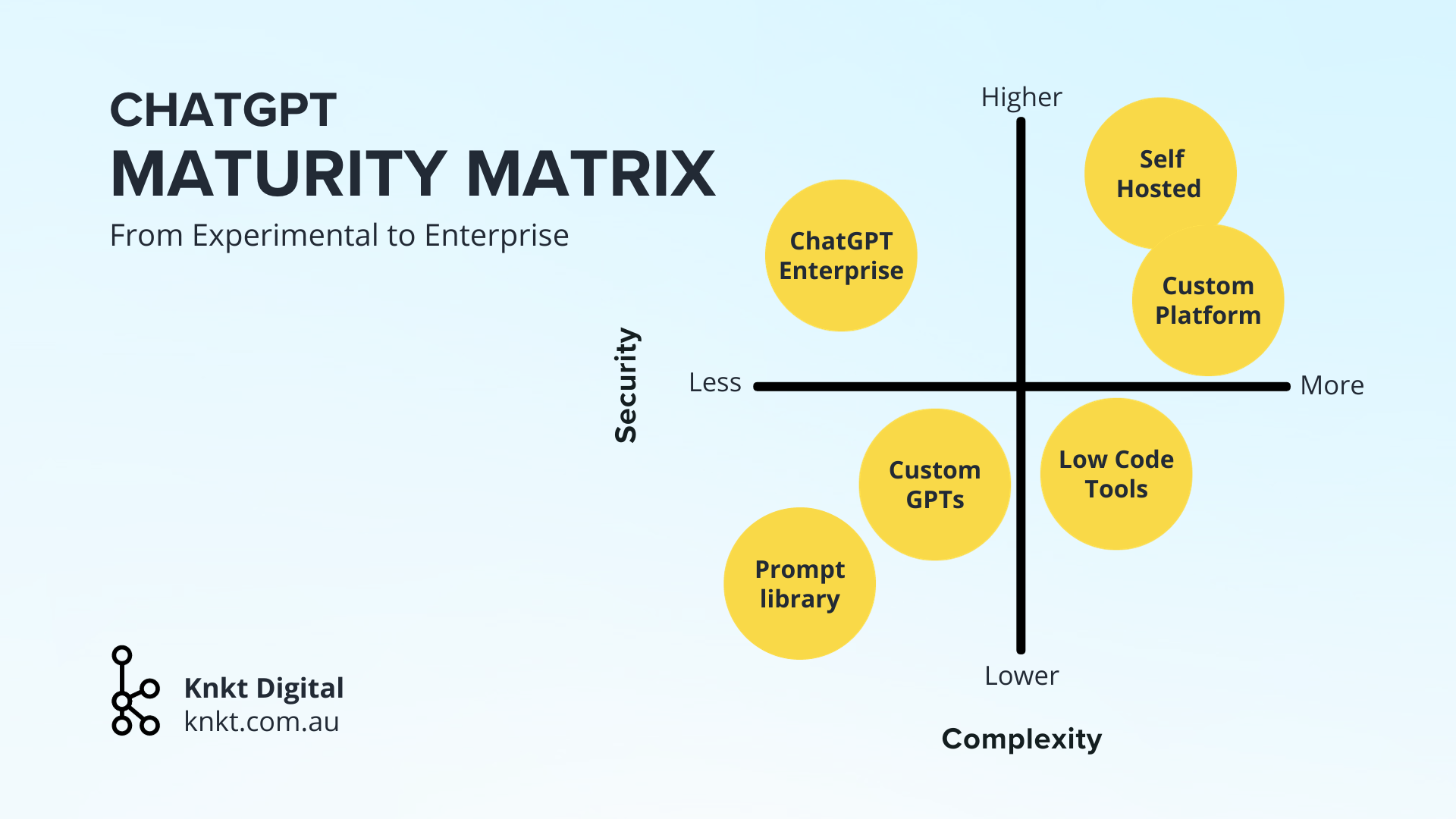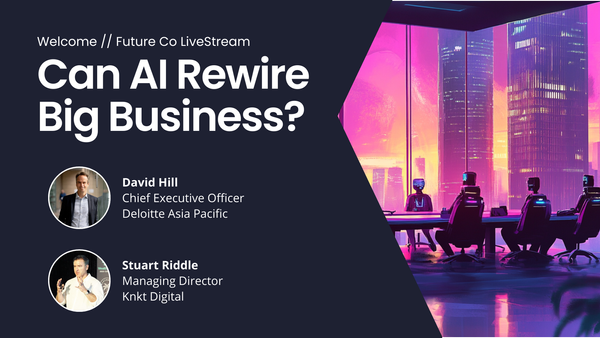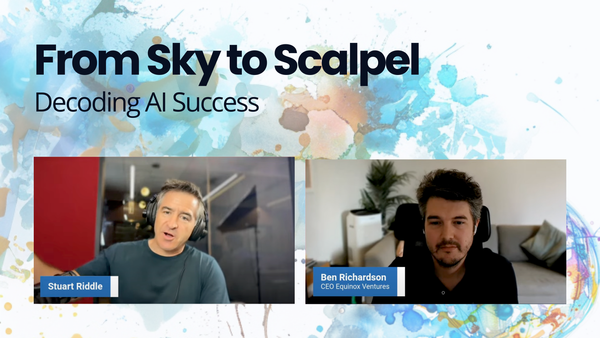GenAI Leadership: A Guide for CxOs
Just as railways redefined connectivity and commerce, Generative AI is reshaping the landscape of digital innovation and strategy. This piece offers a rich exploration of how CxOs can harness this powerful technology, to chart new territories in efficiency, creativity, and market leadership.

The Dawn of a New Era - Generative AI as the Railway of the Digital Age
Just as the advent of the railway revolutionised the 19th century, heralding a new era of connectivity and progress, Generative AI stands today at the forefront of a similar revolution, in the digital realm. AI is reshaping the business landscape, offering unprecedented opportunities for innovation and efficiency, and as a CxO, understanding the capabilities of technology like ChatGPT is crucial for strategic leadership.
Generative AI is akin to the powerful locomotives of the past, capable of traversing vast landscapes of data and ideas, connecting distant concepts, and opening up new territories of opportunity. It also redefines the boundaries of creativity and efficiency, pushing the limits of what's possible in business strategy and execution.
Learning from the Railway Revolution
It's instructive to draw parallels from these pivotal moments in history. The 1800’s were a period that redefined landscapes, economies, and societies – a true hallmark of transformative innovation. Similarly, GenAI represents a seismic shift in the digital world, one that commands a strategic rethinking akin to how visionaries of the railway era reimagined connectivity and progress.
This technological evolution calls for CxOs to adopt a visionary approach. It's about seeing GenAI not just as a tool, but as a fundamental change in the way businesses operate and innovate. The key lies in understanding its potential, navigating its challenges, and leveraging its capabilities.
Let's lay out these parallels to chart a course in the age of GenAI.
- Disruptive Innovation: Just as railways revolutionised transportation and commerce, GenAI is fundamentally altering how information is processed and generated. It's not merely an improvement of existing technologies but a radical shift. A new playing field.
- Connectivity and Speed: Railways connected distant places, significantly reducing travel time. GenAI connects disparate data points at unprecedented speeds, offering insights and solutions much faster than traditional methods.
- Economic Transformation: The railways opened up new markets, boosted trade, and transformed economies. GenAI is poised to have a similar impact, driving economic growth by creating new markets and transforming existing ones.
- Cultural Change: Railways changed how people viewed the world and their place in it. GenAI is also shifting cultural paradigms, particularly in the realm of creativity and problem-solving.
- Global Impact: Just as railways had a global impact, breaking down national boundaries, GenAI is a global phenomenon.
- Infrastructure for Future Development: Railways laid the physical infrastructure for future growth. AI is powering digital infrastructure that will underpin future technological developments.
- Democratisation of Access: Railways made travel accessible to more people. GenAI has the potential to democratise access to advanced data processing and creative tools, levelling the playing field in many industries.
- Adaptation and Skill Development: The railway era required new skills and adaptations. Similarly, GenAI is creating a need for new skills and a shift in the workforce, emphasising adaptability and continuous learning.
Lay Down the Tracks for Success
As a business leader in the digital age, your role is pivotal, reminiscent of the railway tycoons who forged new paths across uncharted lands. Just as they connected distant places and opened up new realms of possibility, you’re at the forefront of linking disparate ideas and harnessing the vast potential of new technologies.
You’ll need to approach the implementation of GenAI with both curiosity and strategic intent.
- Curiosity: Be open-minded about the possibilities. Experiment and explore the potential.
- Strategic foresight: You’ll need short-term agility coupled with long-term vision. This means thinking ahead about how this technology can transform your business, planning for its integration, and considering the potential impacts on operations, customer service, product development, and competitive positioning.
Getting practical - Preparing for the Shift

The following ten points are thought starters, designed to ignite deeper conversations with your board and leadership team about how you can plan for and leverage AI.
Consider each point as a lens through which you can review your current thinking, identify potential areas for innovation, and anticipate the challenges and opportunities that lie ahead.
1. Understanding Generative AI
GenAI refers to algorithms that can generate text, images, data insights and more, by learning from vast amounts of data. This technology is not just about automation; it's about creating new content and solving complex problems.
Getting practical: What's our levels of AI fluency?
- Board Meeting agenda: Assessing our understanding and readiness for GenAI.
- Leadership discussion: What are our current capabilities in understanding and applying GenAI? Who’s currently using GenAI, and what for?
2. The Strategic Potential of Generative AI
GenAI can revolutionise business operations, from marketing and customer service to product development and market analysis. Its ability to generate novel ideas and solutions opens new avenues for learning, innovation and growth.
Getting Practical: Harnessing AI's power
- Board Meeting agenda: How does GenAI fit within our strategic initiatives?
3. Industry-Specific Applications
GenAI’s versatility means it can be tailored to solve specific industry challenges. Whether it's creating personalised marketing content in retail or optimising logistics in manufacturing, the applications are as diverse as the industries themselves.
Getting Practical: Industry focus
- Leadership discussion: Identify specific challenges and research AI use cases relevant to our industry. What can we learn?
4. Leadership in the Era of AI
Your role is crucial in steering your organisation through the adoption of Generative AI. This involves aligning AI strategies with business goals, working through changes management, and ensuring ethical AI use.
Getting Practical: AI leadership
- Leadership discussion: Moving from AI experimentation to company-side execution. How to co-ordinate and align AI initiatives with overall business objectives.

5. Ethical Implications and Responsible AI
GenAI poses ethical challenges, from data privacy to the potential for misuse. CxOs need to champion responsible AI use, and implement guardrails for ethical standards and regulatory compliance.
Getting Practical: Navigating ethics
- Team Discussion: Which use cases involving AI require governance, privacy measures or compliance?
6. AI and Competitive Advantage
In a rapidly evolving market, GenAI can be a significant competitive differentiator. Its ability to quickly generate insights and innovate can give your company an edge in agility and responsiveness.
Getting Practical: The competitive edge
- Strategy Session: Exploring innovative ways to use AI for competitive advantage.
7. Preparing for an AI-Savvy Workforce
The workforce of the future will not only be familiar with AI but will expect it. Business leaders need to prepare for this, building an AI-fluent culture that bridges generational gaps and encourages learning, experimentation and continuous development within teams.
Getting Practical: Workforce Transformation
- Internal Workshop: Initiatives to build AI literacy and skills across the organisation.
- HR discussion: Integrating AI into our employer brand and hiring process.
- Internal Workshop: Planning for change, and how to tackle the implementation of AI across our workforce.
8. Navigating AI Investments
Investing in GenAI is a strategic decision. Start with an experimental phase, then measure impact and scale accordingly. Custom AI solutions require larger budgets but can offer significant benefits at scale.
Getting Practical: Smart Investment Strategies
- Financial planning: Developing a structured approach for a co-ordinated approach to planning, investing in and measuring AI-powered projects.
9. Data Management and AI Governance
Effective data management is one of the keys to a successful AI project. Technical teams should ensure robust data governance practices to leverage AI's potential while mitigating risks.
Getting Practical: Data Governance
- Team Checklist: Implementing data management best practices and governance policies.
- Leadership meeting: Breaking down data silos for more effective, company-wide intelligence and insights.
10. The Future of Generative AI: Staying Ahead
In the fast-paced and ever-changing realm of AI, it's a significant challenge to keep up with every new development. Future Co's role is to simplify this process.
We aim to deliver focused, relevant information, equipping CxOs with the insights they need to make strategic decisions and stay competitive, without getting bogged down in the complexities of the entire AI field.
Getting Practical: Future Planning
- Workshops: Hold workshops or training sessions on GenAI, led by experts. These sessions can be designed to provide a deeper understanding of specific AI technologies relevant to your industry.
- Collaboration with AI Experts: Forge partnerships or advisory relationships with AI thought leaders, for and insights applicable to your business context.
- Innovation think tanks: Create internal think tanks or innovation groups dedicated to exploring and experimenting with GenAI applications. This can help in generating ideas on how to integrate AI, and tap into latent energy around the topic.
In the same way our steam-powered pioneers harnessed the power of the railways to redefine an era, we see GenAI as a once-in-a-generation opportunity to shape the future of business.
It's about practical innovation – using GenAI not just for the sake of technology, but as a means to smarter, more efficient business practices and sustained growth.




